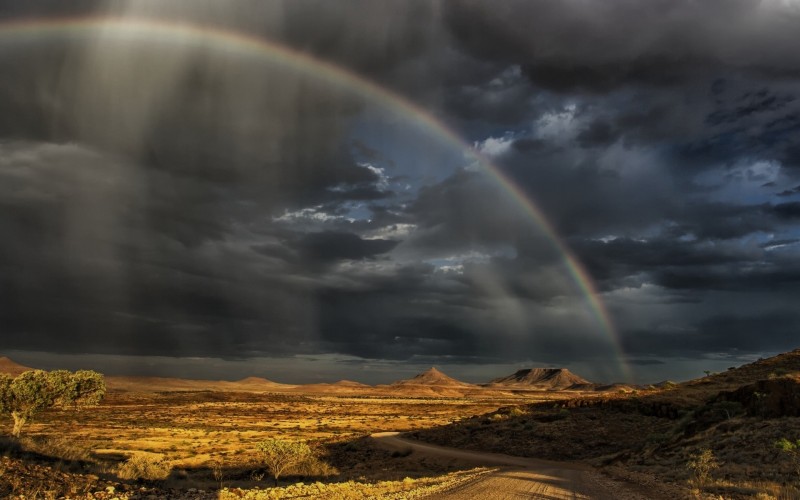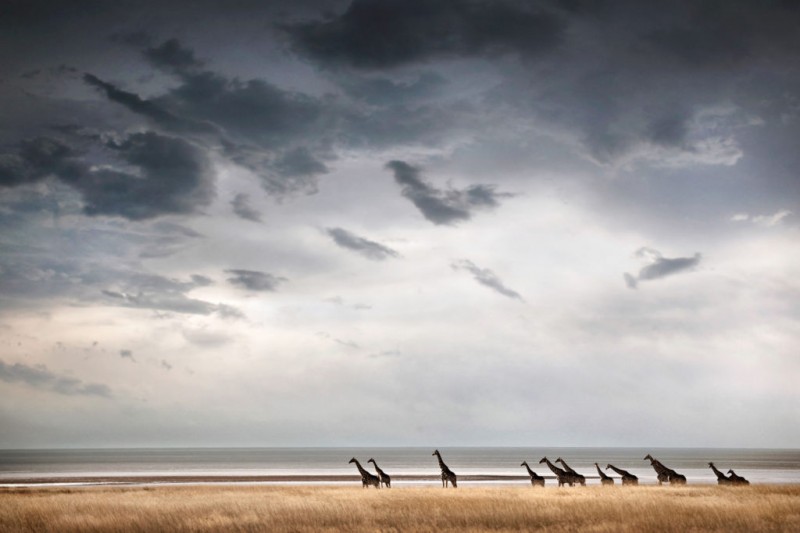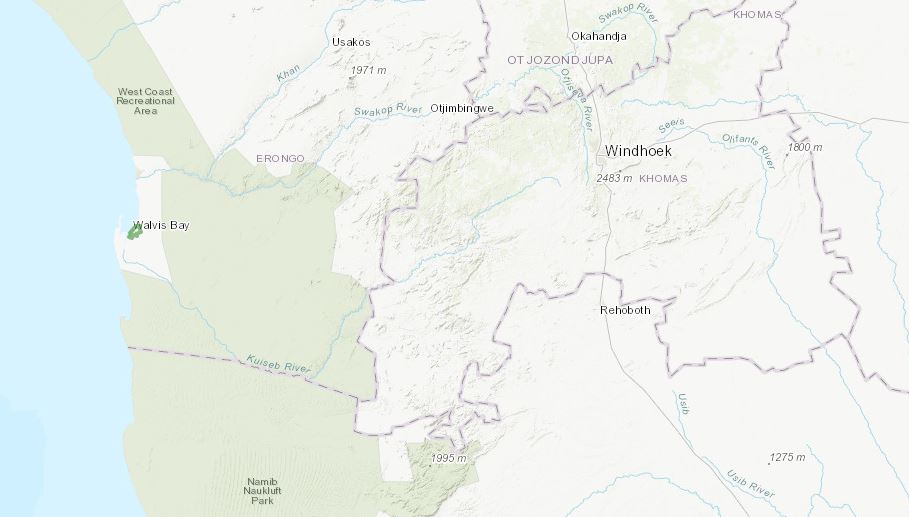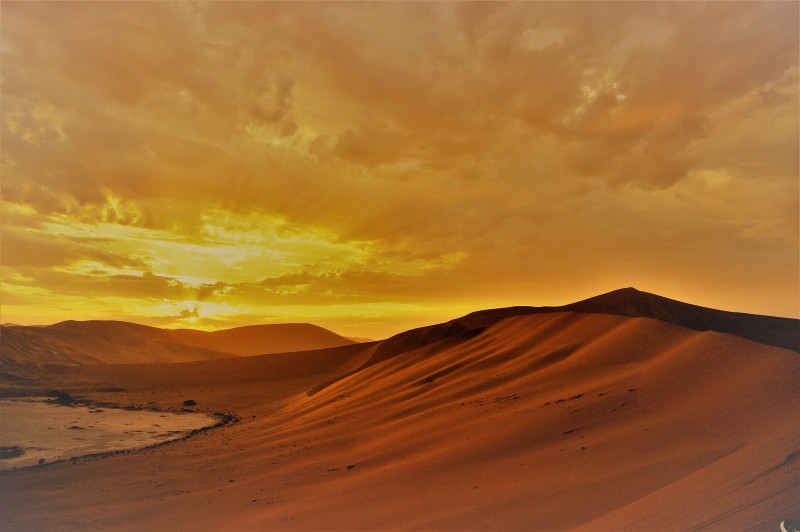January is mid-summer in Namibia, which means high temperatures and – to the extent that it rains at all – afternoon thunderstorms. Most of the rain falls in the north, especially in the north-eastern Zambezi Region, but sudden downpours can occur across the interior. These seldom last long, however, and rarely disrupt travel, although flash floods may hit the normally dry riverbeds, making them impassable.  Across the interior, the wet summer months are generally less productive for game viewing. Increased surface water allows animals to spread out, often to areas not covered by park roads. This is particularly true in Etosha National Park. When the saltpans are full, wildlife can roam far from the permanent waterholes that make such excellent animal magnets in winter. That said, January is the start of the birthing season so there are newborns to be seen and, if there have been good summer rains, the pan will be full of seasonal pelicans and flamingos.
Across the interior, the wet summer months are generally less productive for game viewing. Increased surface water allows animals to spread out, often to areas not covered by park roads. This is particularly true in Etosha National Park. When the saltpans are full, wildlife can roam far from the permanent waterholes that make such excellent animal magnets in winter. That said, January is the start of the birthing season so there are newborns to be seen and, if there have been good summer rains, the pan will be full of seasonal pelicans and flamingos. 
















